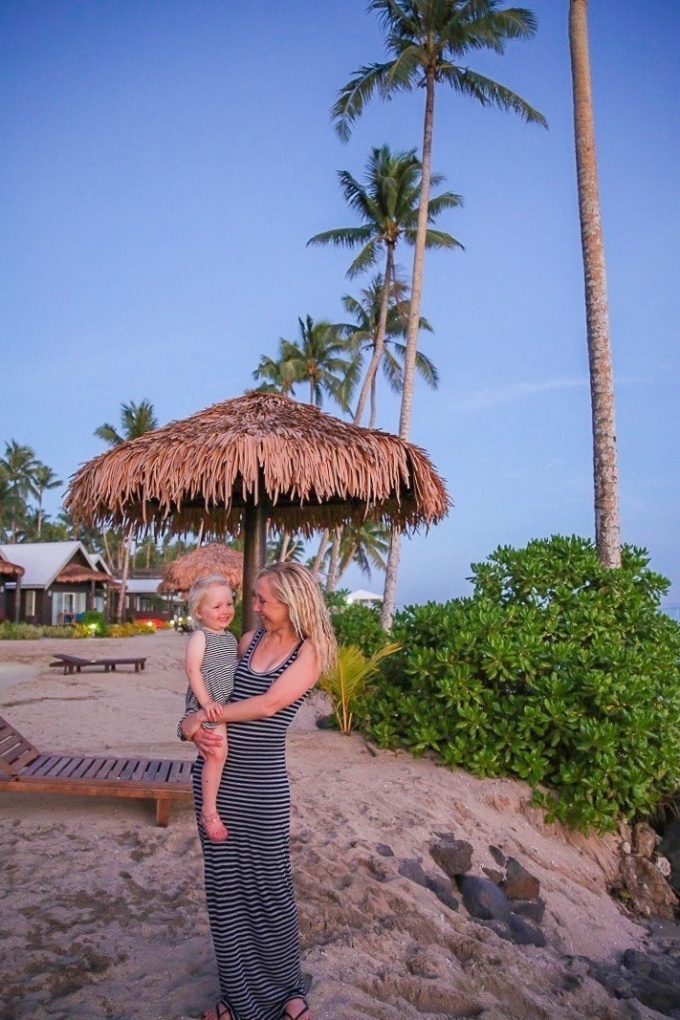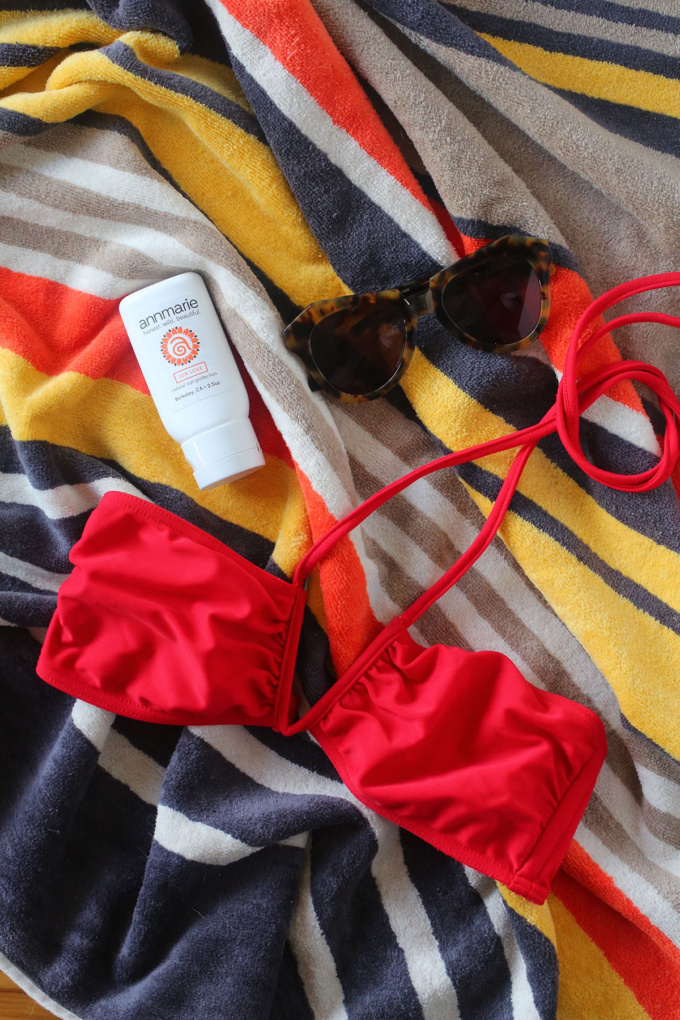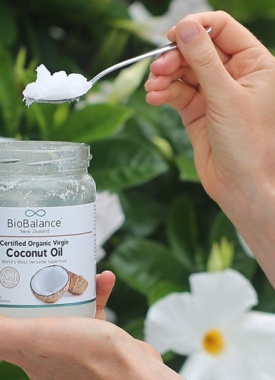How Safe Is Your Skin From The Sun?


With the weekend coming up, many of us will be thinking about heading outdoors to enjoy some of the gorgeous sunny weather we’re still experiencing here in NZ and Australia. Meanwhile for our northern hemisphere friends, things are just starting to warm up.
But before you race out beach towel in hand, I wanted to chat today about sunscreen. Firstly why you should use it, but also importantly some of the nasties you need to look out for and how you can stay sun safe as well as toxin free. There’s a fair amount of misinformation out there about sun protection, and a number of common questions afoot. I.e Why should we protect ourselves from the sun? What about Vitamin D, do we need more of it? What’s the deal with SPF? And what ingredients do we need to be avoiding?
Today I’m going to answer all those questions, and set you on the right path towards sun-safe toxin-free health and happiness.
Why should you protect yourself from the sun?
We’ve all heard about UV rays from the sun damaging our skin. But what’s the difference between the two types of rays UVA and UVB? To put it simply, UVA are long wave rays that penetrate deep into the skin and cause aging, while UVB are short wave rays that hit the surface of the skin and cause burning. Many stock standard chemical sunscreens are pretty good at blocking out UVB (the burn), but not UVA (the wrinklies). And yes, even on a cloudy day you can get sunburned, which is when UVA rays are likely to catch you unawares.
As much as we all want to look like frolicking Hawaiian beach babes, sunburn can lead to melanoma and other skin cancers, which can often be fatal. In New Zealand, skin cancer amounts to 80% of all new cancers each year making it the most common cause of cancer in the country. NZ and Australia combined have the highest rates of melanoma in the world, around four times more than our buddies in the USA, UK and Canada.
So, why do we have so much skin cancer?
One key reason is the low ozone levels over NZ and Australia, commonly known as the ‘hole in the ozone layer’. As ozone levels are depleted (due to pollution, animal agriculture and other non-green activities), the atmosphere loses more and more of its protective filter function, and more solar UV radiation reaches the Earth’s surface. Other contributing factors also include our love of the outdoors, a desire to be ‘brown’, a high proportion of people with fair skin, and high levels of Ultra Violet Radiation during daylight saving months.

Figure 1: Malignant Melanoma Mortality Rates (World Health Organisation)
What about Vitamin D – do we need it?
We sure do. Vitamin D maintains calcium and phosphate homeostasis (regulation in the body), and optimises bone health and muscle function. Low levels are linked to bone diseases such as osteoporosis and rickets in children. There are also links between vitamin D deficiency and other cancers and diseases, as well as more common skin issues such as psoriasis and eczema.
Some direct UVB sun exposure is required to synthesise the vitamin D from our food, however it’s a fine balance between getting enough sun for this purpose, whilst also keeping our risk of skin damage low. Getting physical whilst in the sun has been associated with increased vitamin D levels, so taking a short walk outside in the early morning or afternoon is one way to optimise your vitamin D. Don’t be overly concerned though, as vitamin D deficiency in the general population in pretty low. In a recent NZ study (Ministry of Health, 2012), only 5% of the population were deficient, and they were largely elderly in hospital or rest homes, people with dark skin who cover up a lot, and people who completely avoid the sun.
Sunbeds – a safe alternative?
Sunbeds might seem like a safe option for getting a golden glow (and I confess, once upon time I went there, regularly). Unfortunately though they’re not. In 2009 the World Health Organisation classified UV radiation from sunbeds as being carcinogenic ie causes cancer. They also found that people who start using sunbeds before the age of 30 (which is most of us who try them), increase their chances of melanoma by a massive 75%. A number of countries including Brazil and NSW in Australia (by 2014) have decided to completely ban sunbeds. The fact of the matter is – whilst you might look nice and brown now, that tan will end up sagging and you’ll be one wrinkly mama or papa in 30 years time.
The down low on SPF
Most sunscreens have an SPF rating on the label which stands for “sun protection factor”. This measures your protection from UVB rays, the ones that cause redness and sunburn. It doesn’t however measure UVA rays, which are the ones that deeply penetrate the skin causing aging and skin damage. This is why you’ll often hear reference to ‘broad spectrum’ sunscreens which protect you against both – lots of cheapies only protect against UVB.
So we understand SPF, but what about the numbers? Unfortunately many people believe that a higher SPF is directly correlated to the length of time they can stay in the sun. I.e that an SPF 30 is twice as protective as an SPF 15 right? Wrong. An SPF 2 blocks 50% of UVB rays, while an SPF 15 blocks 93%, an SPF 30 blocks 97% and an SPF 50 blocks about 99%. So while an increase in SPF does mean greater protection, the number we read comes with diminishing returns, providing a false sense of security. In fact the US Food and Drug Administration (FDA) cracked down in 2011 on companies posting ridiculously high SPF numbers, so that now any products with an SPF over 50 may only say “SPF 50+”.

Figure 2: SPF Ratings/UVB Protection (COOLA)
Physical vs Chemical Sunscreens
Most standard sunscreens you buy are chemical based ie have been made with ingredients from the lab. They ordinarily include a host of nasty harmful chemicals such as PABA, cinnamates, oxybenzone, and retinyl palmitate or retinol. All of these ingredients are absorbed into the skin and blood stream, and have been linked with hormone and endocrine disruption, allergies and increased cancer cell growth (ironic isn’t it).
Physical sunscreens in contrast use either zinc oxide or titanium dioxide, which are natural elements that sit on the skin rather than being absorbed. Remember the old school fluro zinc war paint we used to ceremoniously swipe on our faces as kids? Whilst it felt like an awful thick coat of paint it was in fact quite natural (other than the colouring). Zinc oxide is also the only sunscreen recommended by the FDA for babies, and offers the best UVA and UVB protection.

How to be sun safe, vitamin D packed, and toxin free
Avoid the peak: Stay out of the sun during the peak summer hours (10am-4pm) or cover up with a hat, long sleeves or a sun umbrella if you’re hitting the beach.
Get your vitamin D: Outside of the peak times, get 10-20 minutes in the sun each day sans protection. In summer this might be at 9am or 4pm, while in winter (depending on where you’re living), this could be closer to the middle of the day.
Choose a toxin-free organic sunscreen: When you’re out and about, make sure you cover any exposed bits with a toxin free organic sunscreen. Our tried and tested favourites are:
- Annmarie Gianni Skin Care’s Sun Love – perfect for the face every day, with a slight tint and delicious cacao fragrance. It uses zinc oxide as well as natural herbs and oils for protection. It will be coming to the store very soon, so to get yourself on our reserve list, email us here.
- COOLA Organic Suncare – I personally use the SPF 20 tinted for my face every day (the man uses the untinted) which gives a lovely sheer colour. If you’re heading to the beach or outdoors then the SPF 30 face versions are great too, as they have a more matte feel. The SPF 35+ meanwhile is perfect for the body and kiddies. This range uses zinc oxide and titanium dioxide, and feels beautifully silky and light on your skin.
- Oasis Sun – a great overall body sunscreen in summer, as it’s really good value for a natural product so you can slather it on your arms and legs to your hearts content. It uses zinc oxide plus a very small amount of chemical barrier, the remaining 94% of ingredients are all natural and organic, and it’s made in NZ.

Get brown naturally: If you still really want to have a tan, choose the natural healthy option and use an organic fake tan instead. We love Eco Tan’s Winter Skin as it’s super subtle, and you just apply as you would a moisturiser when you jump out of the shower. It’s packed full of delicious ingredients like cacao, herbs, flower extracts, fruit extracts and chamomile too.
Enjoy the last few weeks of beautiful summer sun, and for those of you in the Northern Hemisphere, get yourself ready to be truly sun safe this summer!

PS If you enjoyed this article we’d love you to share the goodness on Facebook (hit the Like & Post to Facebook buttons below), Twitter, or forward the link to a health loving friend.
Sources: World Health Organisation; NZ Ministry of Health; www.sunsmart.org.nz; Cancer Research UK; US Food and Drug Administraton; Annmarie Gianni Skin Care; COOLA Organic Skin Care.



